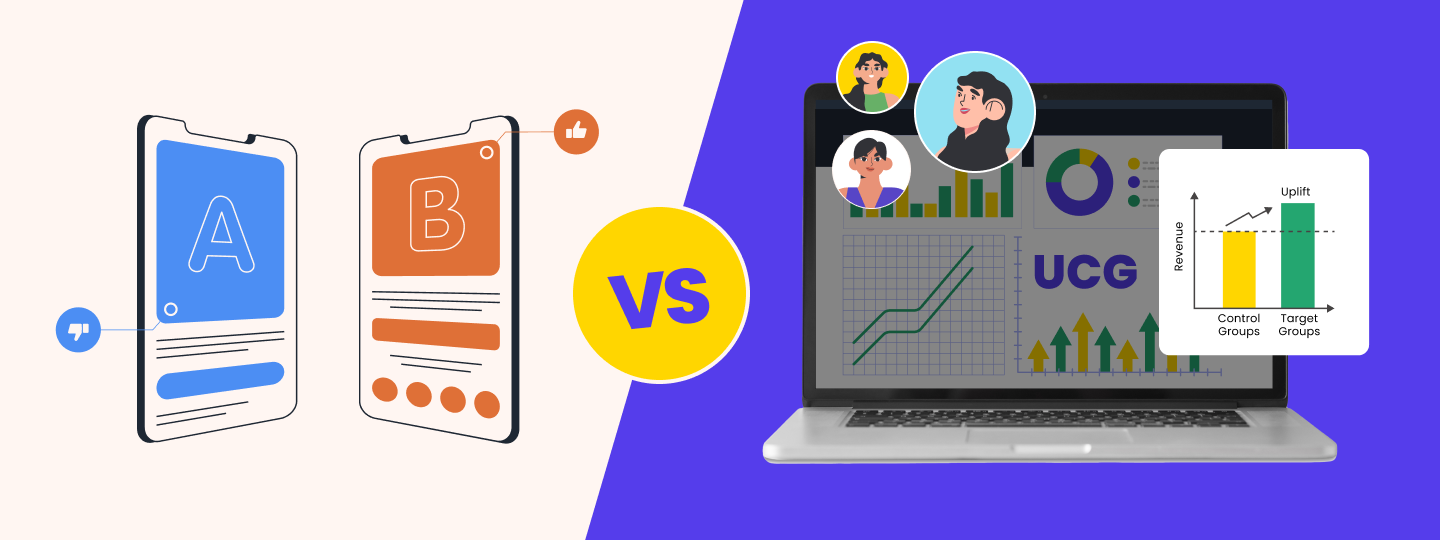The A/B Testing Fallacy: Are You Seeing the Full Picture?
A/B testing has been the gold standard for marketers seeking data-driven decisions for years. It promises clarity: test two variations, pick the winner, and optimize accordingly. But what if the results you trust aren’t telling the whole story? What if the “lift” you see isn’t real but an illusion created by flawed assumptions?
Performance marketers, growth leaders, and experimentation teams must rethink their approach. While A/B testing is excellent for comparing versions, it often overlooks a fundamental question: Would the user have converted anyway, even without the campaign?
What A/B Testing Gets Right—and What It Misses
A/B testing is excellent for measuring relative performance. If you want to test whether a red button converts better than a blue one or if a certain ad copy resonates more, A/B testing provides clear, actionable insights.
But it has blind spots. Here’s what it doesn’t account for:
- Baseline Organic Behavior: Some users would have taken action regardless of the campaign. A/B tests assume all conversions stem from the variation.
- Biased Audiences: The results might be skewed if your test group consists of already engaged users or high-intent visitors.
- External Seasonality: Festive seasons, payday effects, or industry-wide trends can influence performance, misleading marketers into attributing gains to their test.
Relying solely on A/B testing can lead to wasted budgets, misleading ROI calculations, and misguided strategic decisions. Enter Universal Control Groups (UCG).
UCG: The Truth Serum for Martech Performance
Universal Control Groups (UCG) solve A/B testing’s biggest flaw: the inability to measure true incrementality. Instead of testing one version against another, UCG isolates users who receive no marketing intervention. This allows marketers to calculate what would have happened naturally.
Here’s when UCG outperforms A/B testing:
- Brand Campaigns: If you’re running awareness campaigns, A/B testing won’t show whether engagement is due to the campaign or organic discovery. UCG does.
- Lifecycle Nudges: Are your retention efforts making a difference, or would users have returned anyway? UCG can tell.
- Long-Term Impact: While A/B testing often measures immediate responses, UCG accounts for the reality that customers may convert days or even weeks after a campaign—giving you a more complete picture of long-term influence.
- Revenue and Order Uplift Measurement: UCG shows you exactly how much extra business and how many additional orders your campaign actually brought in.

Understanding Uplift: How UCG Measures True Impact
A/B testing can show a campaign led to a 15% conversion lift, but UCG helps break that down:
- What portion of the 15% would have converted without the campaign?
- How many were influenced purely because of the marketing effort?
- What was the actual incremental uplift driven by the campaign?
Without UCG, marketers risk attributing organic conversions to their campaigns, which can lead to overestimation of performance and inefficient budget allocation.
A D2C Example: When A/B Testing Fails to Show the Whole Picture
Imagine an e-commerce brand launching a push notification campaign offering a 15% discount to re-engage inactive customers. A traditional A/B test might show a 12% increase in conversions. But when applying UCG, the results tell a different story:
- 9% of those users would have returned and purchased even without the discount.
- Only 3% of the conversions were truly incremental due to the campaign.
- The brand realises that the discount offer cannibalised organic purchases, leading to unnecessary revenue loss.
With this insight, the brand shifts its strategy—testing more personalised engagement rather than blanket discounts, ultimately improving profit margins while maintaining conversion rates.
Smarter Marketing: Why You Need Both A/B Testing & UCG
The best marketers aren’t choosing between A/B testing and UCG. They’re running both in parallel.
- Use A/B testing for tactical optimizations—creative performance, messaging effectiveness, UI tweaks.
- Use UCG to measure true business impact and prevent over-attribution.
- Combine both methods to ensure your marketing decisions are based on reality—not illusions.
In today’s data-driven world, brands that measure true incrementality with UCG gain a massive competitive edge. The question is: Are you ready to see the full picture?



































 Ananya Nigam
Ananya Nigam
 Harshita Lal
Harshita Lal